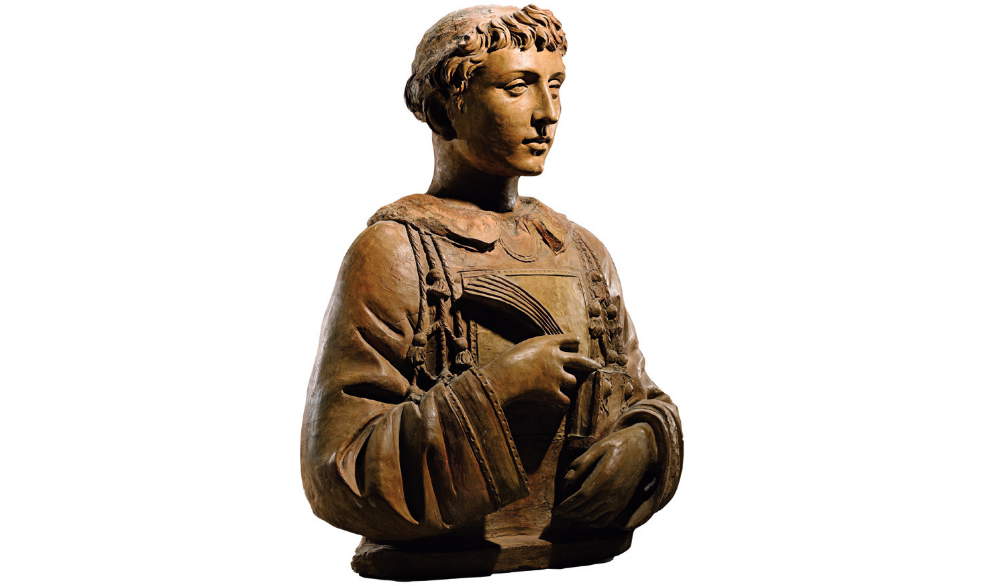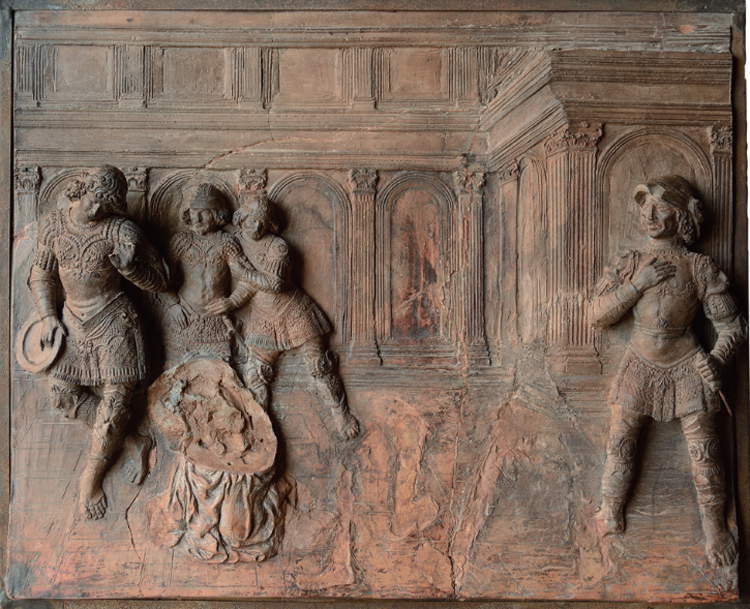The new Museo dell’Opera del Duomo in Florence is hosting until February 26, 2017 Donatello and Verrocchio. Masterpieces Rediscovered.
The exhibition presents, in fact, two great masterpieces by two equally great artists of 15th-century Florence: the terracotta bust depicting San Lorenzo, attributed to Donatello, and a relief, also in terracotta, that has the Decollation of St. John the Baptist as the subject of the figuration. The latter has the same subject, size, composition and perspective-architectural construction as the scene commissioned from Andrea del Verrocchio for the extraordinary Silver Altar, a symbolic piece of the Museo dell’Opera del Duomo’s holdings, made between 1366-1483 for the Florence Baptistery by multiple artists, including Verrocchio himself and Antonio del Pollaiolo, the greatest exponents of Florentine sculpture of the time. The relief on display in the exhibition, therefore, would have been made in Verrocchio’s own workshop.
Francesco Caglioti, a scholar and expert on Donatello, is credited with the “rediscovery” (hence the title of the exhibition) of the bust of San Lorenzo. Dating back to about 1440, it was intended for the tympanum of the main door of the parish church named after him in Borgo San Lorenzo, Mugello, where, in fact, it remained until 1888, when the antiquarian Stefano Bardini (to whom the museum of the same name in Florence is now dedicated) bought it, leaving the “defrauded” community a copy that is still in situ. This was to resell it the following year to Prince John II of Liechtenstein. In 2003 the prince’s heirs put the St. Lawrence up for auction as a 19th-century work, and it was Mr. and Mrs. Silverman, well-known collectors of drawings, sculpture and paintings, who won the work. In subsequent years, when the 19th-century repainting was removed, it was possible to reconstruct the attribution to Donatello.
 |
| Donatello, San Lorenzo |
Also common to the other work on display is a past history of rather eventful vicissitudes: it was stolen by the Nazis during World War II, as war booty that was later to go to make up Hitler’s museum in Linz.
Both works, now belong to the Peter Silverman and Kathleen Onorato Collection, information easily found from the accompanying captions. Less explicit, however, is the intent of the exhibition, that is, to relate the two rediscovered masterpieces to other works by the two artists their creators present within the usual museum itinerary. If, in fact, direct is the relationship between the terracotta relief with Beheading of the Baptist and the same scene in theSilver Altar, because the two works have been physically placed opposite each other, much less clear is the connection between the San Lorenzo and the other works by Donatello that ideally dialogue with it. The placement, while prestigious at the foot of the two Cantorie, made by Donatello himself the one and by Luca della Robbia the other, does not allow a direct comparison with those figures made by Donatello for the façade of the Duomo or for the Campanile, of which the bust of Saint Lawrence would be the model and which are displayed in the first rooms of the museum, on the ground floor. Donatello manifests in the work on display that measured classicism that we find, for example, in the Profetino, or in the face of Isaac in the Sacrifice group, or again in the young Prophet traditionally recognized as St. John the Baptist. Evident, however, is the relationship with Luca della Robbia, precisely because of the references to classical figuration, a relationship that would justify the placement in the exhibition precisely between the two Cantorie. The beautiful drawing of the mouth of the Saint Lawrence expresses all the inner strength of the Saint. Donatello’s faces-just think of the similar somatic features of the Saint Louis of Toulouse, the Gattamelata, and the marble David in the Bargello-are true mirrors of the soul. Here, a pure soul, strong in the religious faith that guides it, is embodied in a bust as young and idealized in beauty, as horribly corrupt but extraordinarily true is the soul and figure of Magdalene, who from the lower floor of the museum seems to converse with the St. Lawrence in this obvious plastic-ideological contrast. On the contrary then, the display of the Decollation in front of theSilver Altar, allows, in a close comparison, to understand whether, indeed, the Silverman relief is one of the preparatory models of the same scene later realized in theAltar by Verrocchio and whether, as has been hypothesized, the intervention of Leonardo da Vinci, then active in Verrocchio’s workshop, can be discerned in it.
 |
| Verrocchio, Beheading of the Baptist. |
Unfortunately, the lack of panels highlighting the masterpieces on display (the two works differ from the rest of the permanent collection only in the color, blue, of their captions, which differ from the usual white ones) and explaining the interesting and scientifically relevant intent of the exhibition, reduces the understanding of it to the privileged “class” of “insiders” only. The only tool for fully understanding the exhibition is the fine catalog published by Mandragora with texts by Timothy Verdon, director of the Museo dell’Opera del Duomo, and Alessandro Vezzosi, director of the Museo Ideale Leonardo Da Vinci.
Warning: the translation into English of the original Italian article was created using automatic tools. We undertake to review all articles, but we do not guarantee the total absence of inaccuracies in the translation due to the program. You can find the original by clicking on the ITA button. If you find any mistake,please contact us.